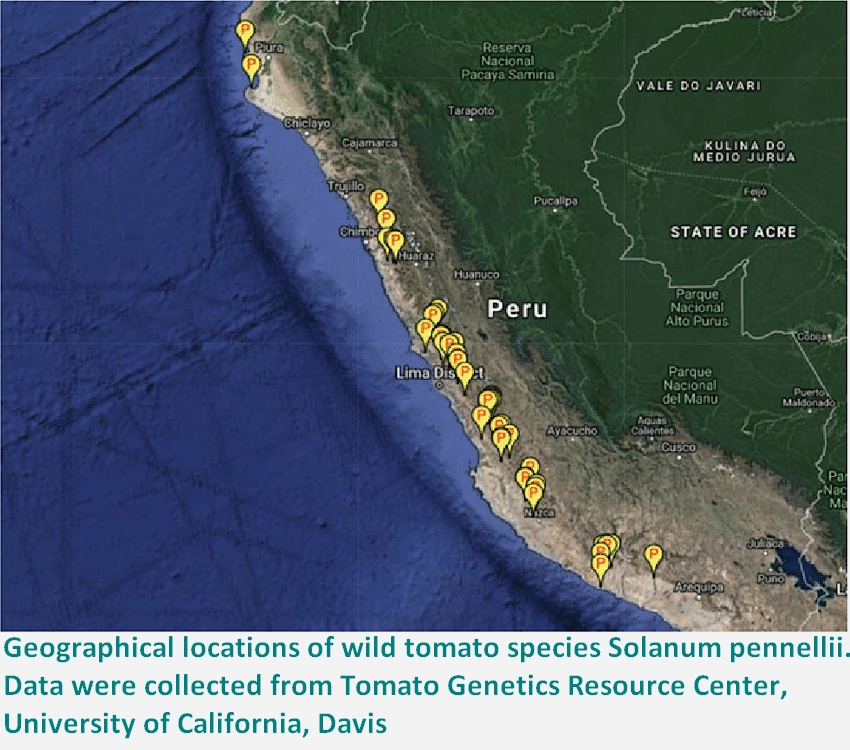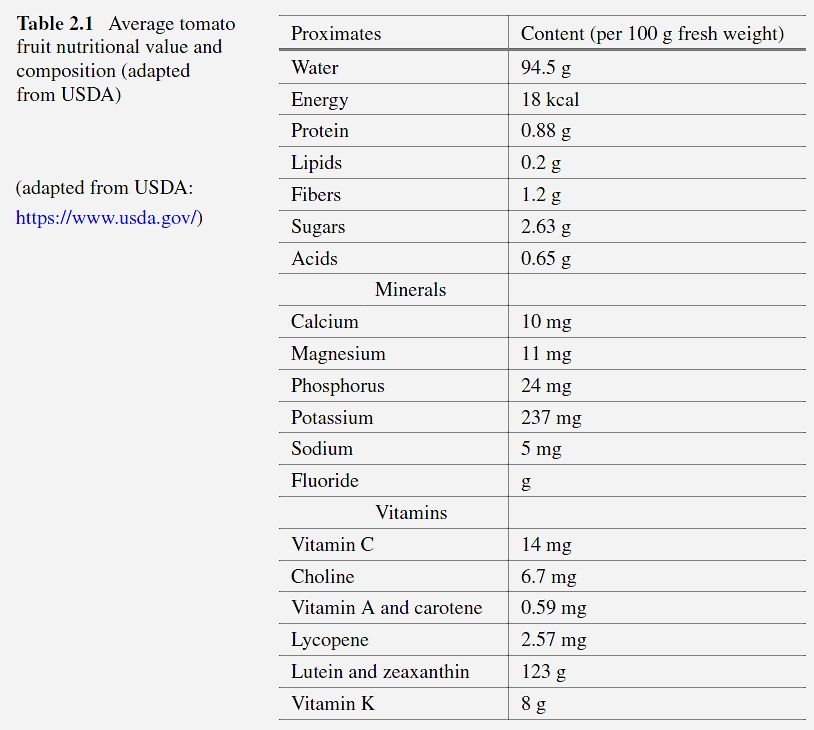By Mathilde Causse, Jiantao Zhao, Isidore Diouf, Jiaojiao Wang, Veronique Lefebvre, Bernard Caromel, Michel Génard and Nadia Bertin
A new chapter for tomato breeding
Tomato is the first vegetable consumed in the world. It is grown in very different conditions and areas, mainly in field for processing tomatoes while fresh market tomatoes are often produced in greenhouses. Tomato faces many environmental stresses, both biotic and abiotic. Today many new genomic resources are available allowing an acceleration of the genetic progress. In this chapter, researchers first present the main challenges to breed climate-smart tomatoes. The breeding objectives relative to productivity, fruit quality, and adaptation to environmental stresses are presented with a special focus on how climate change is impacting these objectives. In the second part, the genetic and genomic resources available are presented. Then, traditional and molecular breeding techniques are discussed. A special focus is then presented on ecophysiological modeling, which could constitute an important strategy to define new ideotypes adapted to breeding objectives. Finally, scientists illustrate how new biotechnological tools are implemented and could be used to breed climate-smart tomatoes.

Tomato, Solanum lycopersicum L., is a member of the large Solanaceae family, together with potato, eggplant, and pepper. It is a self-pollinated crop, with a diploid (2n = 2x = 24) genome of medium size (950 Mb). A high-quality reference genome sequence was published in 2012 (The Tomato Genome Consortium 2012).
Tomato originates from South America along with 12 wild relative species, which can be crossed with the cultivated tomato species. Several large collections of genetic resources exist and more than 70,000 varieties are conserved in these gene banks. The collections also include scientific resources such as collections of mutants or segregating populations. Tomato is also a model species for genetic analysis since a long time. Many mutations inducing important phenotype variations were discovered and positionally cloned and many disease resistance genes were functionally characterized. Tomato is also a model species for fruit development and physiology. It is easy to transform and it has been the first transgenic food produced and sold.
The 80-page document (114 including references) is divided into five parts (see plan in annex):
 Challenges, Priorities, and Breeding Objectives
Challenges, Priorities, and Breeding Objectives Genetic and Genomic Resources for Trait Breeding
Genetic and Genomic Resources for Trait Breeding Breeding for Smart Tomato
Breeding for Smart Tomato Designing Ideotypes by Ecophysiological Modeling
Designing Ideotypes by Ecophysiological Modeling Biotechnology and Genetic Engineering
Biotechnology and Genetic Engineering
Conclusion and Prospects
Tomato is a crop widely adapted to very different conditions. Subsequently, it has to respond to many stresses. Molecular markers have permitted the dissection of the genetic bases of complex traits into individual components, the location of many genes/QTLs on chromosomes, which became accessible to selection. Molecular markers have also allowed breeders to access to wild species in a more efficient way than in the past. Exotic libraries, which consist of marker-defined genomic regions taken from wild species and introgressed onto the background of elite crop lines, provide plant breeders with an important opportunity to improve the agricultural performance of modern varieties. Several research consortiums (for genome sequencing, but also for the valorization of genetic resources and traditional varieties) were gathered to study tomato diversity and adaptation.
Since the availability of the reference genome, many new resources (genome sequences, millions of SNPs), tools (databases, methodological tools), and methods (genome editing, crop modeling, and genomic selection) became available and thus breeding should be more efficient.
Better knowledge of physiological processes, metabolic pathways, genes involved as well as the genetic variability of candidate genes, mutant identification, and translational genetics may be used to go further. New growth conditions such as urban horticulture must be taken into account.
It will be important to combine the empirical approach of breeders based on an intimate knowledge of the tomato crop with the power of biotechnologies. Integration of related disciplines will be more and more important to develop more efficient methods to evaluate the impact of environment on the crop, enhance knowledge of the biochemical and molecular bases of the traits, and better understand G x E and to increase the adaptation of new varieties to new conditions.
Some complex questions remain for research: how several stresses interact, how to deal with new pathogens and pests, root x rootstock interaction, reduction of fertilizers. Finally, modeling can help taking into account these aspects and designing new ideotypes optimized to the adverse variable or optimal conditions.
Source: researchgate.net
Reference: Causse M. et al. (2020) Genomic Designing for Climate-Smart Tomato. In: Kole C. (eds) Genomic Designing of Climate-Smart Vegetable Crops. Springer, Cham. https://doi.org/10.1007/978-3-319-97415-6_2
Full text:
































